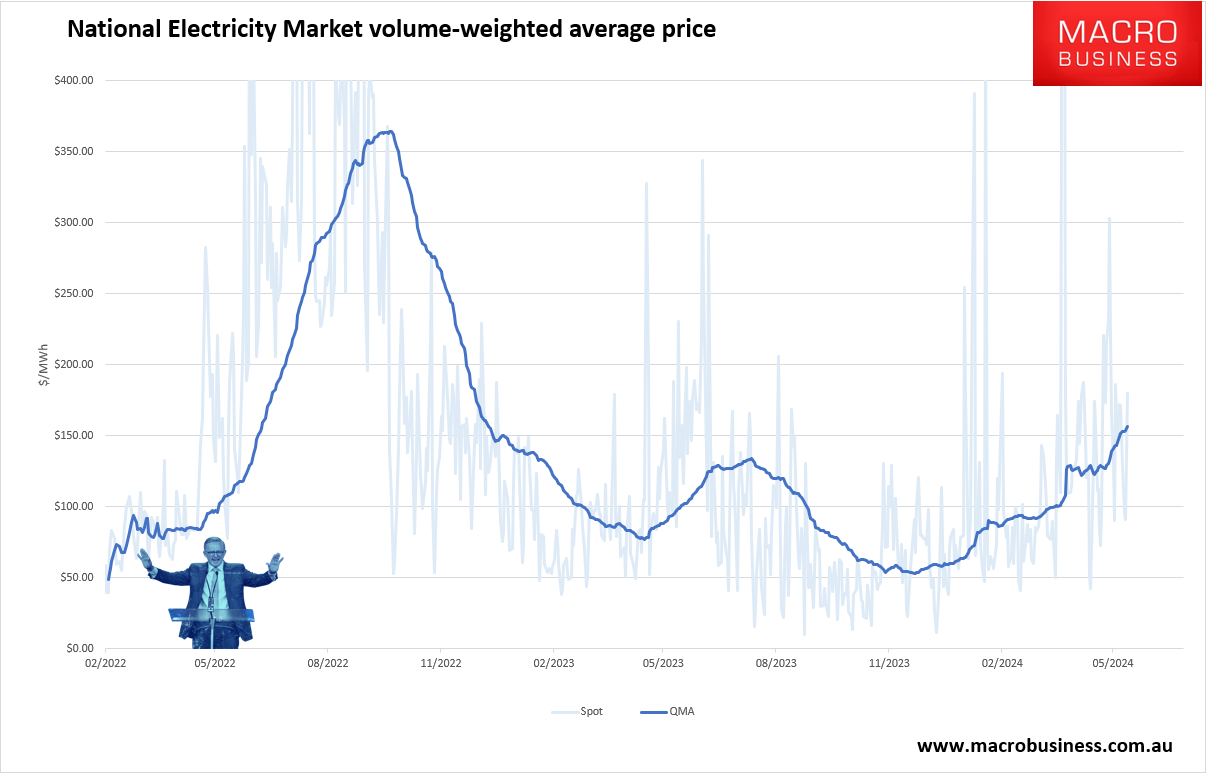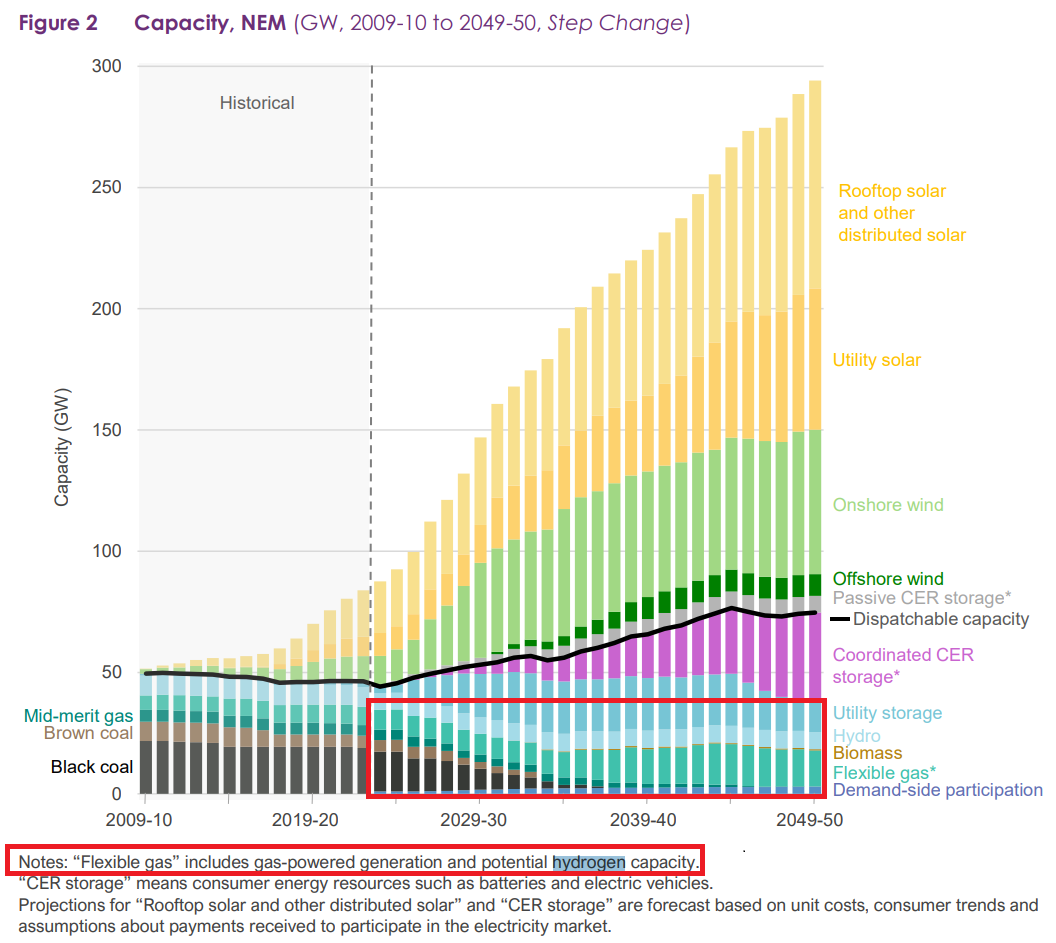Albo’s incredible new power shock surges on:

Driven by his hapless $12Gj gas price floor:

The East Coast gas export cartel tightened its grip on Australia’s throat yesterday as hydrogen face-planted with Twiggy Forrest:
The architect of the first national clean hydrogen strategy, former chief scientist Alan Finkel, says his support for the fuel has “evolved” and concedes it is difficult to see it replacing gas for heating homes.
Dr Finkel, who was commissioned by the Coalition to deliver a road map for developing a local hydrogen industry, said it was “increasingly clear that green hydrogen is too expensive” and Australia was “unlikely to use hydrogen for storage of electricity”.
The potential of the fuel has come under increasing scrutiny – despite Labor unveiling an $8 billion incentive scheme to support its use this year – after Fortescue, green hydrogen’s biggest proponent, pulled its production target and said it would slow the push into the sector, warning energy prices were too high.
“Evolved”. In short, he was horribly wrong.
The Australian Energy Market Operator (AEMO) has been banking on two hydrogen developments.
The first was a green export industry, which may still go ahead, but faces some formidable hurdles:
In Green Energy exports, the NEM would support major new export industries: green energy exported as hydrogen or used to power low-emission heavy industry. This would require hydrogen electrolysers near existing export ports, served by associated transmission. The less likely Green Energy Exports would require 10,000 km of network in the next decade, and a total of 26,000 km through to 2050, with the additional capacity focused on areas useful for export such as ports.

Lol, only 26k of additional poles and wires?
More importantly, the AEMO has also been assuming that green hydrogen would supplement gas as the dispatchable power generation of the future:
Hydrogen is one of several secondary fuels that could support power system reliability when gas pipeline infrastructure is constrained, and meet the need for growth of flexible gas generation.
Policies in New South Wales, South Australia, and Queensland are supporting investment in hydrogen-ready turbines.
The 2024 ISP forecasts only a small contribution from this technology, as hydrogen is still a relatively expensive fuel to use at scale. If hydrogen becomes a cost-efficient fuel, or there is greater government support for hydrogen turbines, they will make a greater contribution.
Yeh, nah.
Why would we build an ungodly expensive new industry that makes super-expensive fuel when all we need is to build a few gas storage tanks down south so that winter gas pipeline constraints from QLD are fixed?
The near-death of hydrogen only makes it more important that we address the failed East Coast gas market with either domestic reservation or $6Gj export levies:

Why must Australia always explore every option other than the one that works?

